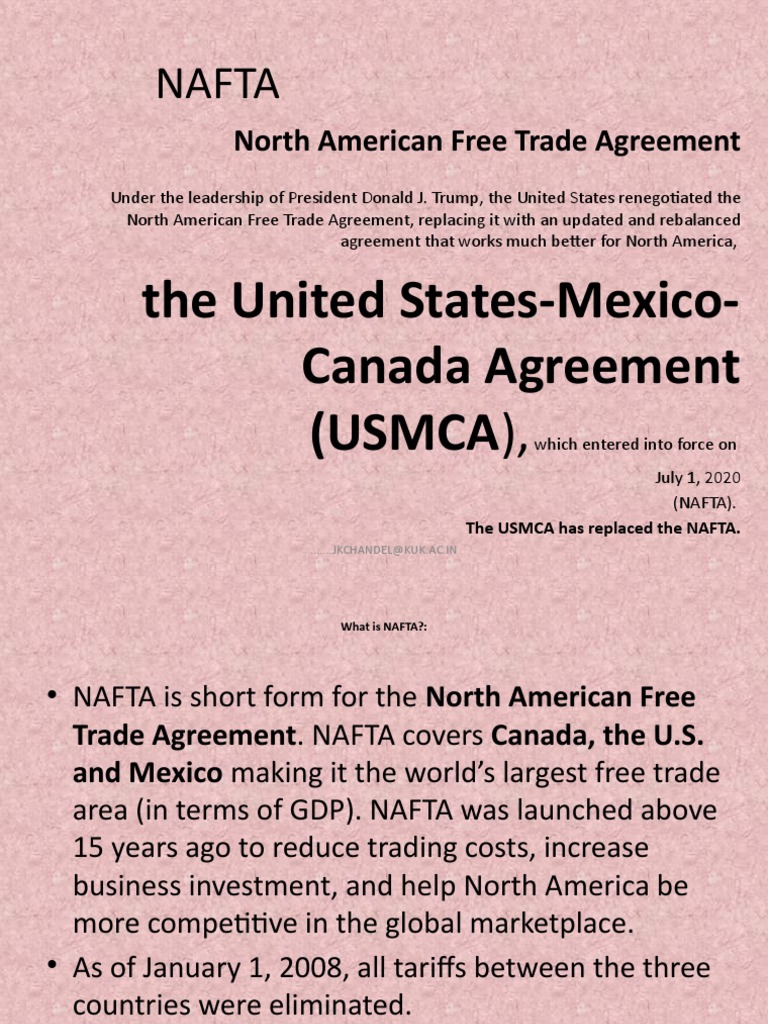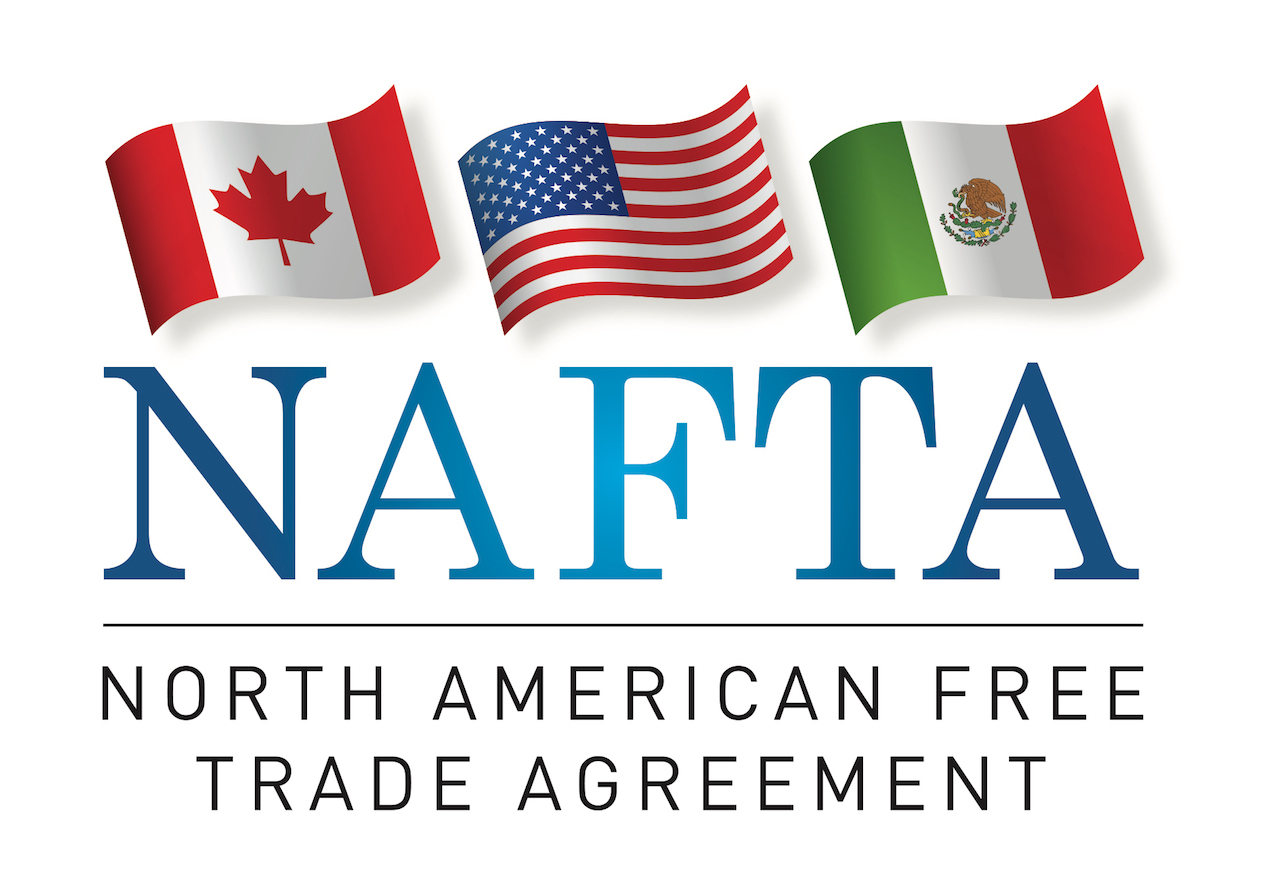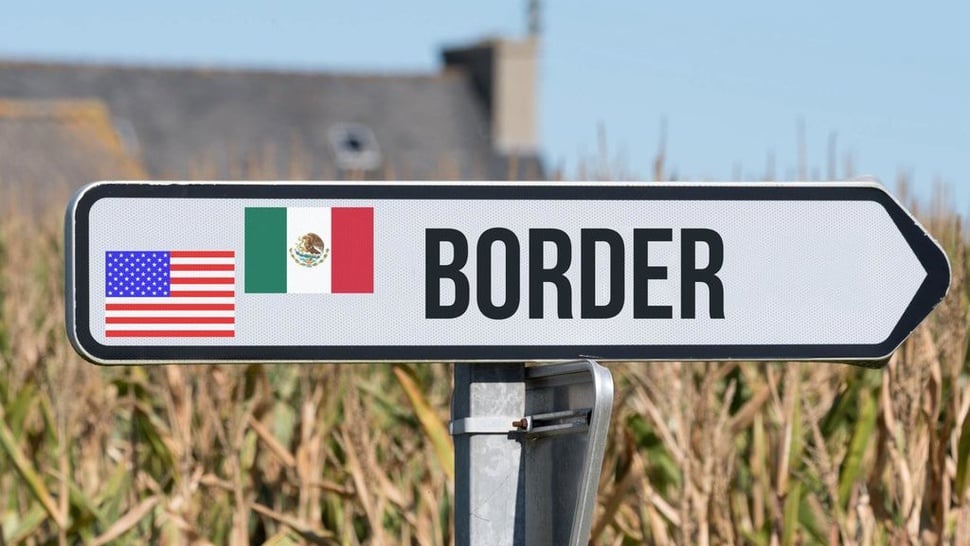
The North American Free Trade Agreement (NAFTA) is a landmark trade agreement between the United States, Canada, and Mexico that has been in effect since January 1, 1994. The agreement aimed to reduce trade barriers and facilitate the exchange of goods and services among the three countries, creating a trilateral trade bloc in North America. In this article, we will delve into the history, benefits, and challenges of NAFTA, as well as its impact on the economies of the participating countries.
History of NAFTA
NAFTA was signed on December 17, 1992, by the leaders of the three countries: U.S. President George H.W. Bush, Canadian Prime Minister Brian Mulroney, and Mexican President Carlos Salinas de Gortari. The agreement was the result of several years of negotiations and was designed to create a single market of over 450 million people, with a combined GDP of over $17 trillion. NAFTA replaced the Canada-United States Free Trade Agreement (CUSFTA) and created a new framework for trade between the three countries.
Key Provisions of NAFTA
NAFTA has several key provisions that have facilitated trade among the three countries. Some of the most significant provisions include:
Tariff reductions: NAFTA eliminated or reduced tariffs on most goods traded among the three countries, making it easier and cheaper for businesses to export and import goods.
Rules of origin: NAFTA established rules of origin to determine the country of origin for goods traded among the three countries, helping to prevent trade diversion and ensuring that only goods that meet certain criteria can be traded duty-free.
Investment protections: NAFTA provides protections for investors, including provisions related to expropriation, national treatment, and most-favored-nation treatment.
Dispute settlement: NAFTA established a dispute settlement mechanism to resolve trade disputes among the three countries.
Benefits of NAFTA
NAFTA has had a significant impact on the economies of the three countries, with several benefits, including:
Increased trade: NAFTA has led to a significant increase in trade among the three countries, with trade volumes increasing from $290 billion in 1993 to over $1.2 trillion in 2020.
Job creation: NAFTA has created jobs in all three countries, particularly in the manufacturing and service sectors.
Increased economic growth: NAFTA has contributed to economic growth in all three countries, with the agreement helping to increase GDP and reduce poverty.
Challenges and Controversies
Despite the benefits of NAFTA, the agreement has also faced several challenges and controversies, including:
Job losses: Some critics argue that NAFTA has led to job losses in certain industries, particularly in the United States, as companies have moved production to Mexico to take advantage of lower labor costs.
Environmental and labor concerns: NAFTA has been criticized for its lack of strong environmental and labor protections, which has led to concerns about the impact of trade on the environment and workers' rights.
Renegotiation and replacement: In 2020, the United States, Mexico, and Canada signed the United States-Mexico-Canada Agreement (USMCA), which replaced NAFTA and introduced new provisions related to trade, investment, and labor.
In conclusion, NAFTA has had a significant impact on the economies of the United States, Canada, and Mexico, with both benefits and challenges. While the agreement has increased trade and created jobs, it has also faced criticism related to job losses, environmental and labor concerns, and renegotiation. As the USMCA replaces NAFTA, it is essential to understand the history, provisions, and impact of the agreement to navigate the complexities of trade in North America.









